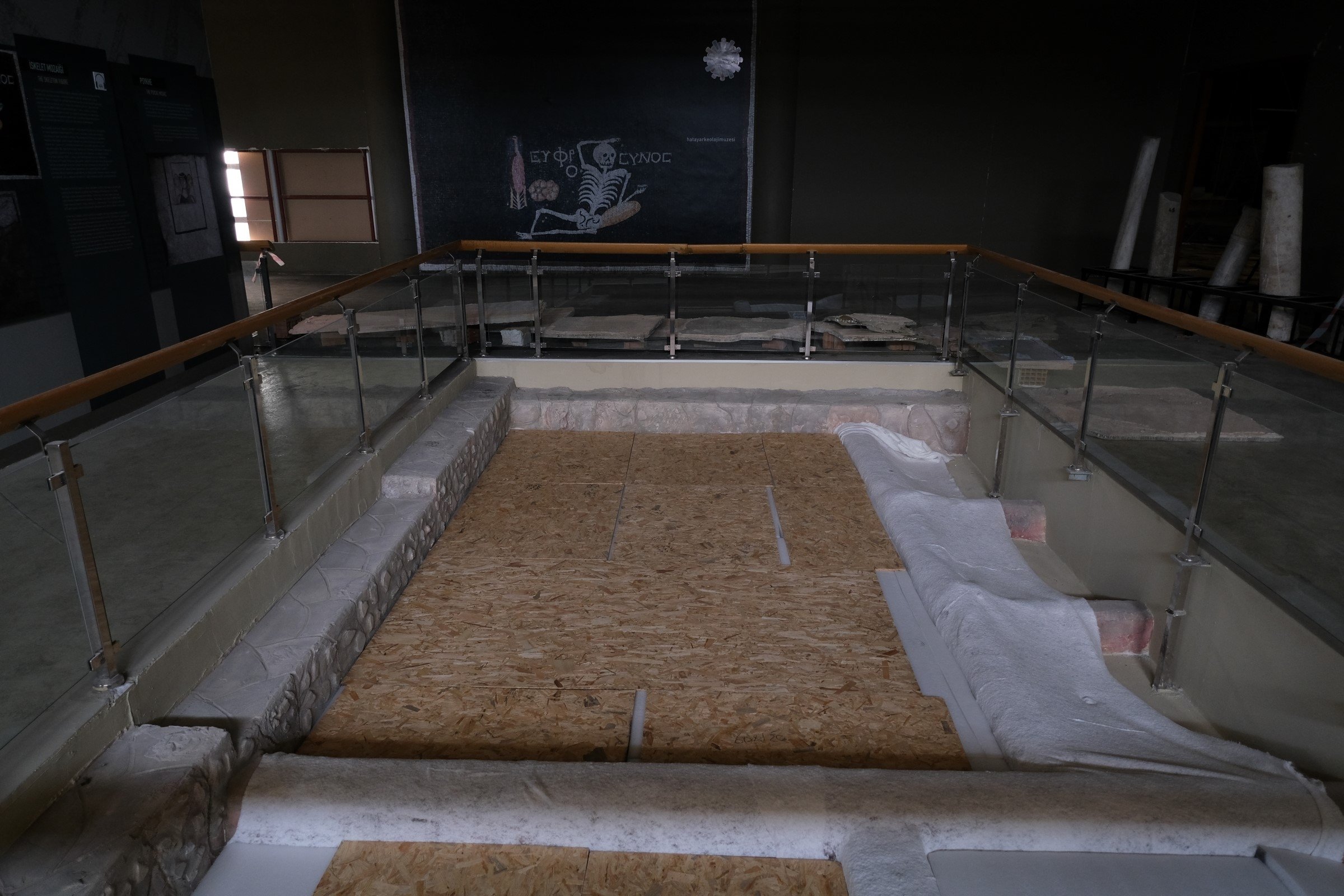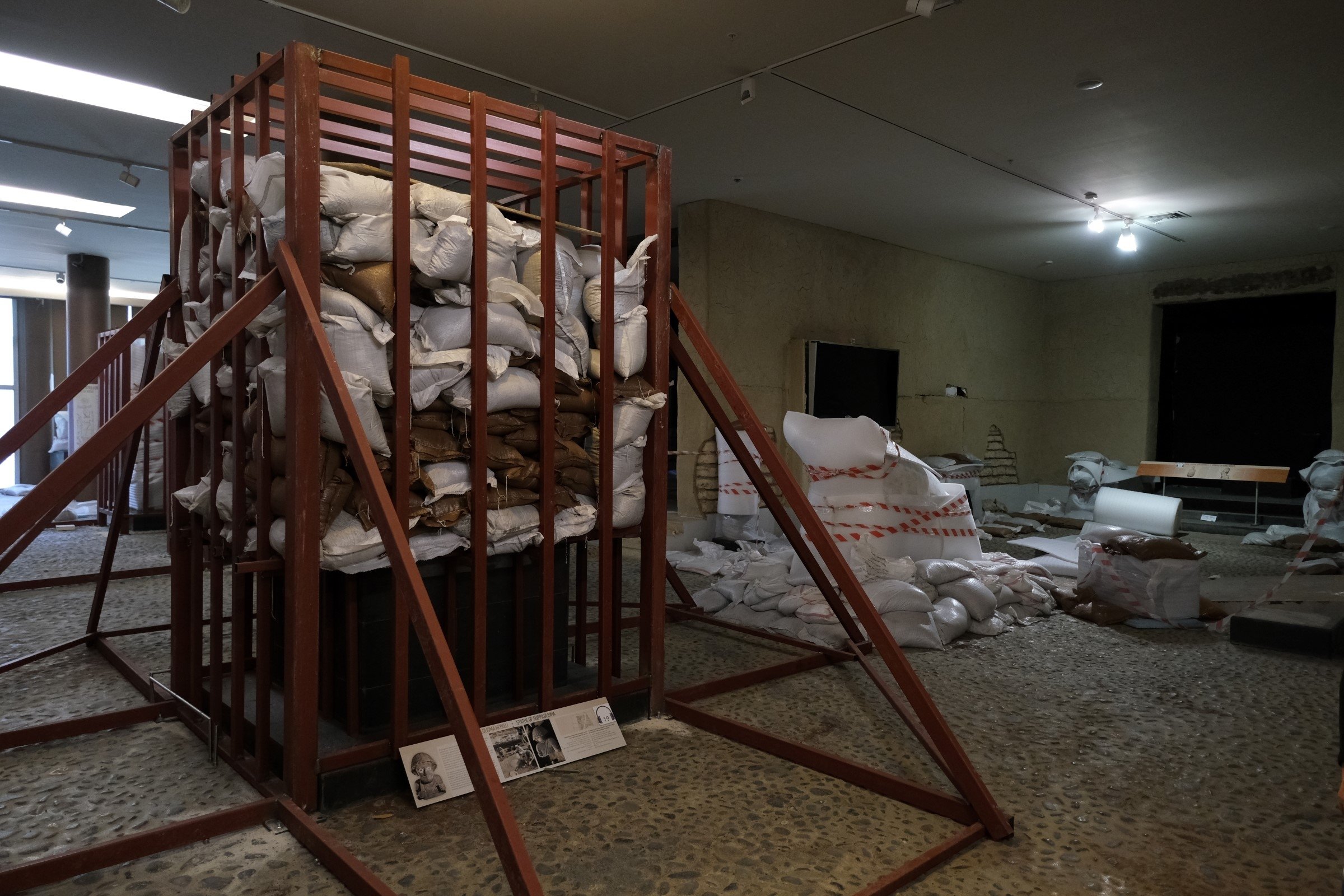© Turkuvaz Haberleşme ve Yayıncılık 2026
As part of protection against aftershocks, 400 small artifacts from the Hatay Archaeological Museum, some of which were damaged in the Feb. 6 earthquake centered in Kahramanmaraş, were relocated north to the Kırşehir Museum, while about 150 historical artifacts weighing tons are being preserved in the museum through an in situ protection strategy.
Built on a historically significant site in 2014, most of Hatay Archaeological Museum's priceless artifacts survived the recent disaster intact. However, as debris removal continues in Hatay, which bore the brunt of the earthquake, an alarm has been raised for the future of the museum's historical artifacts.
Ayşe Ersoy, director of the museum, said: "Our museum is one of the world's most important museums with an area of 10,000 square meters besides being the world's largest mosaic museum. A total of 3,000 artifacts, including 1,500 small and larger artifacts, are exhibited here."
"Hatay is a city famous for its mosaics. When Hatay is mentioned, the mosaics of the ancient city of Antiocheia, Seleukeia Pieria, the ancient city of Alexandretta, villas and baths of this region and districts come to mind. All floor mosaics brought to the museum after the excavations, in the 1930s and in recent years, are exhibited in this museum," she added.

Ersoy stated that the statue that is most popular among locals and whose current condition caused anxiety after the earthquake is the statue of the Hittite King Suppiluliuma I, weighing 1.5 tons.
"After the Great Hittite Kingdom collapsed, the Hittites came to southeastern Anatolia and established small empires and city-states. The neo-Hittite kingdom Walastin/Palastin was also established in this region. He was the king of this kingdom. It is now protected on its very own spot as it is too heavy to be moved," she said.
Stating that the same approach was adopted for the Antakya Sarcophagus, Arsuz stelae and other immovable artifacts, she added: "All moveable artifacts on display here were moved to Kırşehir Museum. Heavy artifacts that are difficult to move were wrapped with geotextiles and eta foam, then covered with pozzolana, a light material known as lava ash, and secured inside a steel cage. Approximately 150 heavy-tonnage artifacts in our museum were protected on site against aftershocks."

The Hatay Archaeology Museum is located in the city of Antakya, in the Hatay province of Türkiye, and is considered one of the most important museums in the country, with a vast collection of artifacts from various historical periods.
The museum was established in 1934, and since then it has turned into an important center for archaeological research in the region. The collection includes artifacts from the Hellenistic, Roman, Byzantine, Islamic and Ottoman periods, besides items from the Bronze and Iron Ages. The museum is divided into three main sections: the archaeology section, the ethnography section and the mosaic section.
The archaeology section contains a variety of artifacts, including sculptures, coins, pottery and jewelry. The most famous item in this section is the Statue of Apollo, which dates back to the second century B.C. The statue is made of white marble and is about 1.85 meters (6 feet) tall. Another important item in this section is the sarcophagus of King Antiochus I, which also dates back to the second century B.C.
The ethnography section contains items that reflect the cultural heritage of the region. These include traditional clothing, musical instruments and household items. The most important item in this section is the silverware of the Hatay region, which is known for its intricate designs and fine craftsmanship.
The mosaic section contains a large collection of mosaics from the Roman and Byzantine periods. These mosaics depict various scenes from mythology, history and daily life. The most famous mosaic in this section is the "Gypsy Girl" mosaic, which dates back to the second century A.D. This mosaic is known for its vivid colors and intricate details.
The Hatay Archaeology Museum is an important cultural center in the region, and its collection reflects the rich history of the area. It is an important destination for tourists and scholars alike, and it provides a glimpse into the cultural heritage of the region. The museum also plays an important role in preserving artifacts and promoting the cultural identity of the Hatay region.
